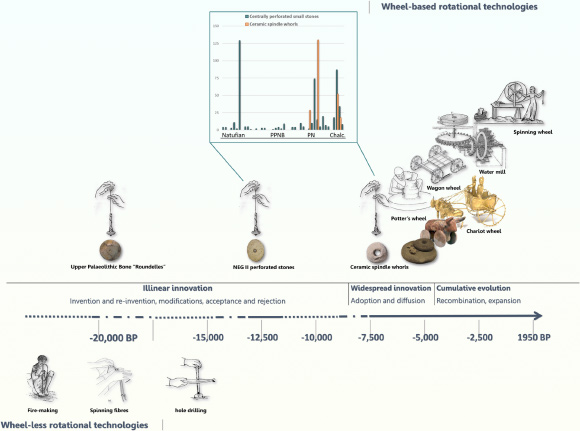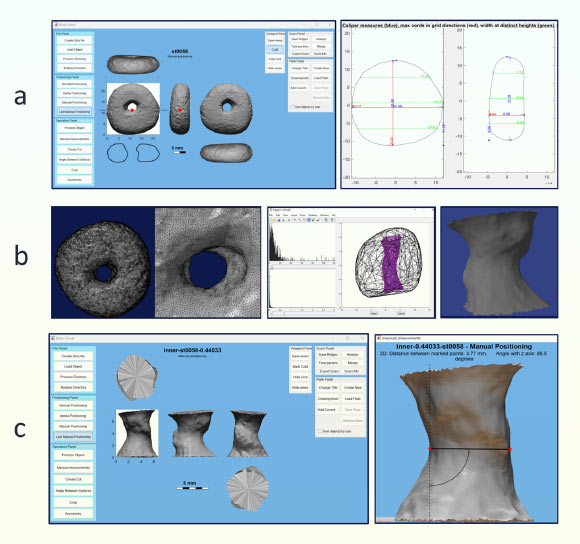Archaeologists have examined an exceptional assemblage of over a hundred perforated pebbles from the 12,000-year-old Natufian village of Nahal Ein-Gev II in Israel and concluded that these items could have served as spindle whorls to spin fibers.
Donut-shaped objects connected to a bar, forming a wheel and axle, are a key invention springboarding technological development and are commonly associated with Bronze Age carts.
Spindle whorls, round, weighted objects that are attached to a spindle stick, form a similar wheel-and-axle-like device to help the spindle rotate faster and longer, enabling it to efficiently gather up fibers such as wool or flax and spin them into yarn.
“Circular objects with a hollowed centre connected to a bar make one of the most important inventions of all time,” said Hebrew University of Jerusalem archaeologists Talia Yashuv and Leore Grosman.
“By causing parts of devices to move, wheels brought about inventions that have revolutionized human transportation, energy exploitation, engineering and the mechanical industry.”
“From carts, cars, potter’s wheels and power mills, oil/wine-pressers, lathes, spinning wheels and many other applications, each invention has had its distinct footprint on the history and evolution of technology.”
“At the core of it all, the importance of ‘the wheel and axle’ lies in a relatively simple rotational mechanism capable of transforming linear to rotary motion and vice versa.”

In their research, the archaeologists examined a collection of over a hundred perforated, mostly-limestone pebbles recovered from the Nahal-Ein Gev II site in northern Israel.
These artifacts date back approximately 12,000 years, during the important transition to an agricultural lifestyle and the Neolithic period, long before the cart wheels of the Bronze Age.
The researchers deduce that the stones were likely used as spindle whorls — a hypothesis also supported by successfully spinning flax using replicas…
Read the full article here





